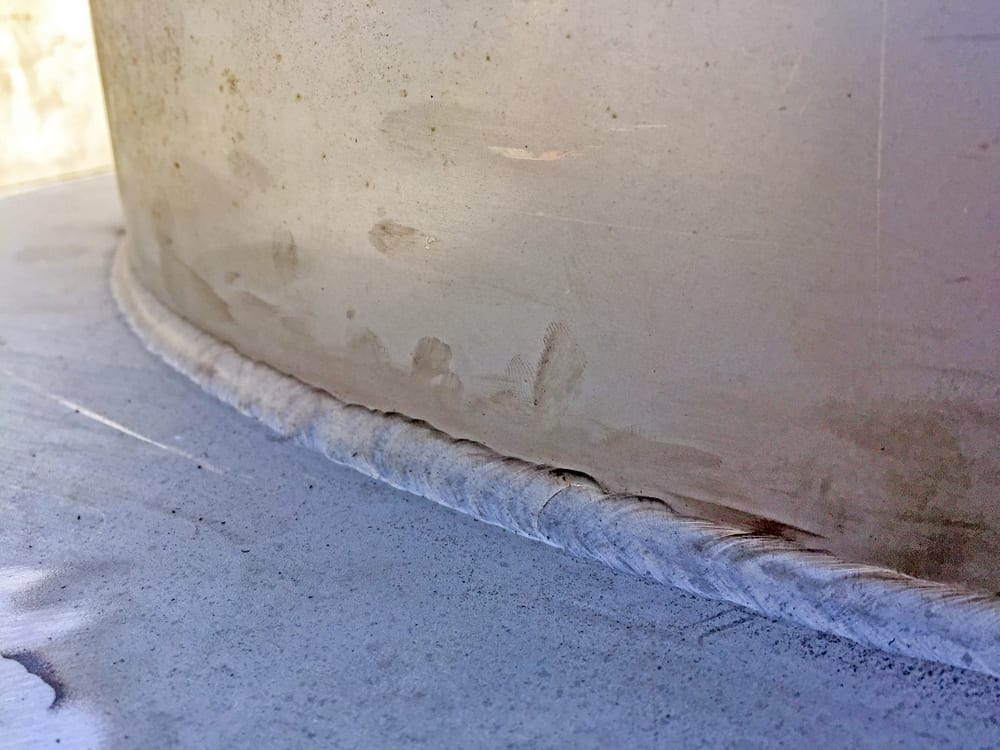Best Practices for Preventing Weld Undercut: Mastering the Fundamentals
Best Practices for Preventing Weld Undercut: Mastering the Fundamentals
Blog Article
Recognizing the Causes and Solutions for Undercut Welding in Metal Fabrication Processes
In the realm of steel fabrication procedures, the event of undercut welding presents a substantial difficulty that requires a detailed understanding of its causes and feasible services. The detailed interaction of different factors during welding procedures can cause this undesirable sensation, affecting the structural honesty and overall high quality of the bonded joints - Preventing weld undercut. By studying the origin of undercut welding and discovering reliable remedial actions, fabricators can raise the criterion of their handiwork and make sure the production of remarkable metal components
Usual Sources Of Undercut Welding
Often ignored in metal fabrication, undercut welding occurs due to different variables that demand precise attention and competence to be efficiently reduced. Furthermore, incorrect welding methods, such as utilizing the incorrect welding angle or take a trip speed, can likewise contribute to undercut formation. The choice of welding parameters, such as voltage, current, and wire feed rate, plays a substantial duty in the event of undercut welding.
Influence of Incorrect Welding Parameters
Imprecise welding criteria can dramatically endanger the stability and high quality of welded joints in metal manufacture procedures. The effect of inaccurate welding parameters manifests in numerous methods, resulting in structural weaknesses and issues in the bonded components. One crucial aspect influenced by inappropriate welding specifications is the penetration deepness of the weld. Inadequate heat input as a result of reduced welding currents or excessively high traveling rates can result in poor combination between the base steels, resulting in insufficient joint infiltration and weakened bonds. Alternatively, extreme heat input brought on by high welding currents or sluggish travel rates can lead to extreme and burn-through reinforcement, producing a brittle and unpredictable weld structure. In addition, inaccurate criteria such as incorrect voltage setups or inaccurate electrode angles can add to erratic weld grain profiles, absence of fusion, and boosted chances of flaws like undercutting. Careful focus to welding parameters is vital to make certain the production of top notch welds with the wanted mechanical homes and architectural honesty.
Result of Improper Lantern Angle
Inappropriate lantern angle in welding procedures can substantially affect the high quality and stability of the final weld joints in metal fabrication processes. The torch angle plays an important function in figuring out the warm input and distribution during welding. When the torch angle is incorrect, issues such as damaging can emerge. Damaging is a typical welding problem where a groove forms along the weld toe, compromising the joint and compromising its architectural honesty.
A lantern angle that is as well steep can bring about not enough penetration, incomplete blend, and boosted spatter. On the other hand, a lantern angle that is as well shallow can cause extreme penetration, burn-through, and distortion of the base product. Preventing weld undercut. Appropriate torch angle is crucial for making sure consistent weld top quality, stamina, and appearance
To protect against undercutting and various other flaws brought on by inappropriate torch angles, welders have to be trained to maintain the right torch angle throughout the welding process. Routine monitoring and change of torch angles throughout welding can help accomplish sound welds with very little defects.
Function of Inadequate Welding Techniques

An additional facet of poor welding methods is incorrect weld preparation. Inadequate cleaning of the base metals, wrong joint layout, or not enough side preparation can all add to damage welding. Inadequate shielding gas protection or using the incorrect kind of gas can result in insufficient fusion and the development of undercut flaws.
To deal with the function of insufficient welding methods in steel manufacture processes, it is necessary to supply extensive training for welders. Correct education and learning on welding specifications, joint preparation, and securing gas option can help avoid undercut welding and make sure top notch welds in metal construction projects.
Efficient Solutions for Undercut Welding
Attending to undercut welding in metal manufacture needs executing reliable services to enhance weld high quality and architectural honesty. One of the key options to combat undercut is to readjust welding specifications such as voltage, existing, and travel rate to guarantee correct heat input and fusion. By fine-tuning these setups, welders can prevent too much melting of the base metal and filler material, reducing the probability of undercut development.
Furthermore, correct joint preparation is critical in protecting against undercut. Making certain clean base metal surface areas without pollutants and making use of the suitable bevel angle can aid advertise better weld infiltration and reduce the threat of undercut Get More Information - Preventing weld undercut. Employing appropriate welding methods, such as oscillating the torch or weaving, can likewise assist in dispersing heat evenly and filling up the weld joint adequately, reducing the opportunity of undercut defects
Additionally, choosing the proper welding consumables, consisting of electrodes and filler steels, is important in alleviating undercut. Utilizing products with ideal chemical make-ups and mechanical residential or commercial their website properties can add to attaining audio welds with marginal undercut. Normal inspection and quality assurance measures should also be executed to spot and deal with undercut concerns without delay, making sure the general stability of produced metal components.

Verdict
To conclude, recognizing the causes and remedies for undercut welding in metal manufacture procedures is vital for accomplishing premium welds. By dealing with common reasons such as wrong welding specifications, improper lantern angle, and insufficient welding strategies, welders can stop undercutting and ensure solid, resilient welds. It is important to pay attention to these variables and execute effective options to improve the overall welding process and end product top quality.

Report this page